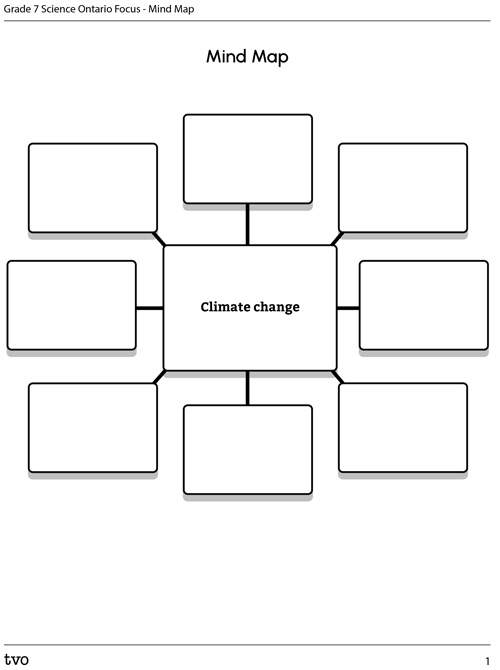Minds On
Climate change
What does climate change mean to you?
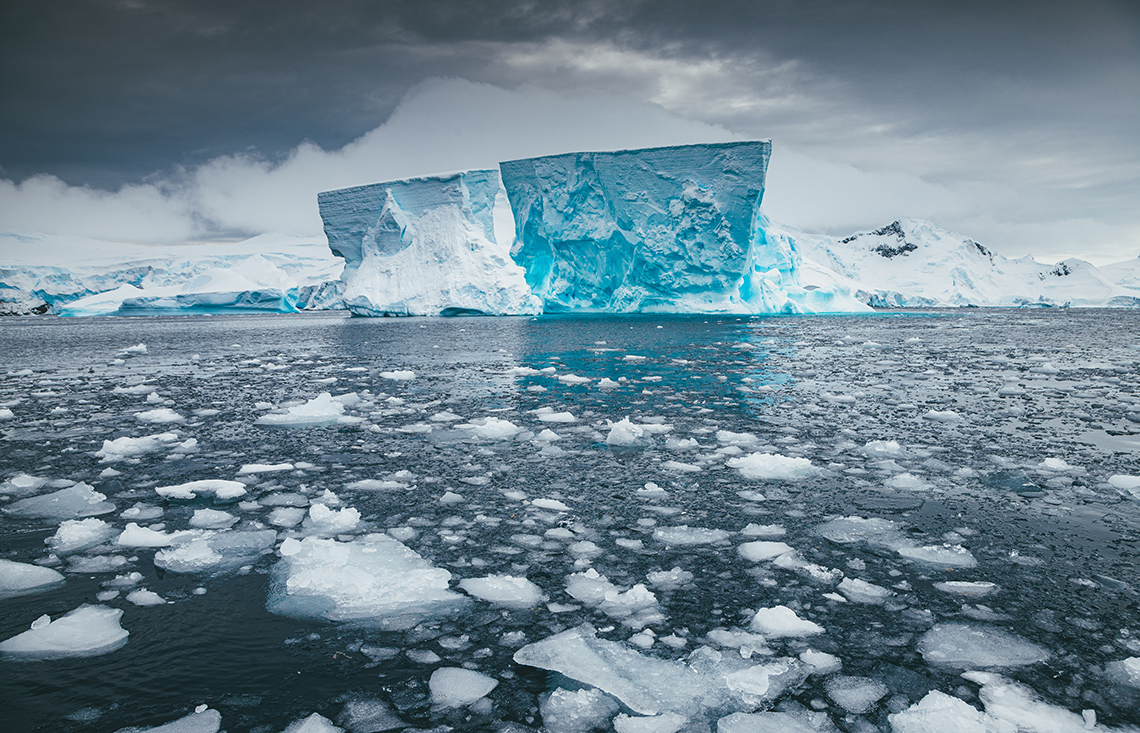
Brainstorm
Brainstorm
Let’s brainstorm about any words, ideas, people, images, etc. that come to mind when you think about the words, “climate change.”
Record your ideas in a mind map or another method of your choice.
Complete the Mind Map in your notebook or using the following fillable and printable document. If you would like, you can use speech-to-text or audio recording tools to record your thoughts.
What do you think?
How is climate change affecting Ontario? How might it be affecting your community?
Record your ideas in a notebook or another method of your choice.
Action
Ontario connection
This learning activity highlights people, places, or innovations that relate directly to the province of Ontario. Enjoy the exploration!

How did we get here?
What is climate change?
Climate change is a significant, long-term change in the world climate, which can be brought about by either human or natural factors.
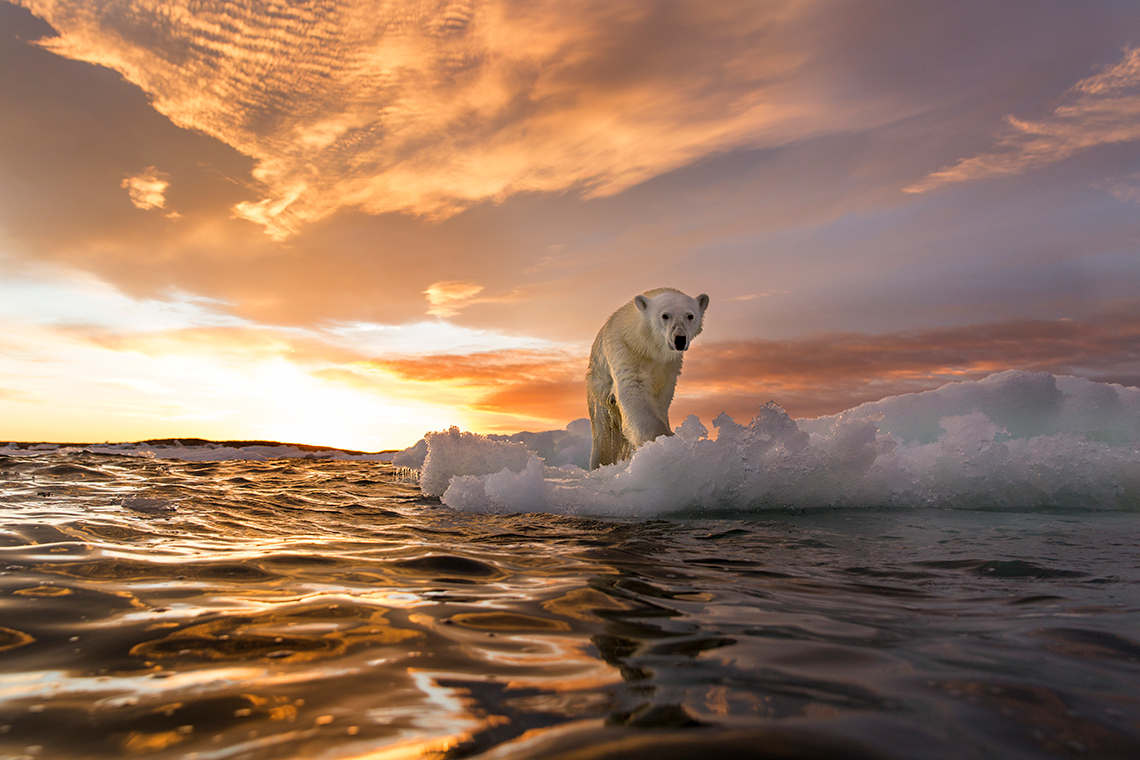
Climate change is happening now.
While there has always been variation in the Earth’s climate, there is agreement in the scientific community that human activity has increased the amount of greenhouse gases being released into the atmosphere.
Because of this, it is leading to a significant increase in the Earth’s temperature — hence the expression “global warming.”
Investigate
Investigate
How does climate change work?
Kate Marvel is an associate research scientist at Columbia University and at NASA’s Goddard Institute for Space Studies.
Check out this video entitled “Kate Marvel: How Climate Change Works” to learn more about climate change.
While exploring the video, create sketch notes or record any key information about the human impact on climate change in a method of your choice as you investigate.
Press ‘Hint’ to access what is a sketch note.
Sketch notes are visual notes used to record information you are learning, either through illustrations, symbols, structures, and text.
You may also use the following checklist on how to record the information you collect.
I can record information by…
When you have finished exploring the video and your notes are complete, compare your sketch notes with the following sample.
Press ‘Sample’ to access a sample set of sketch notes.
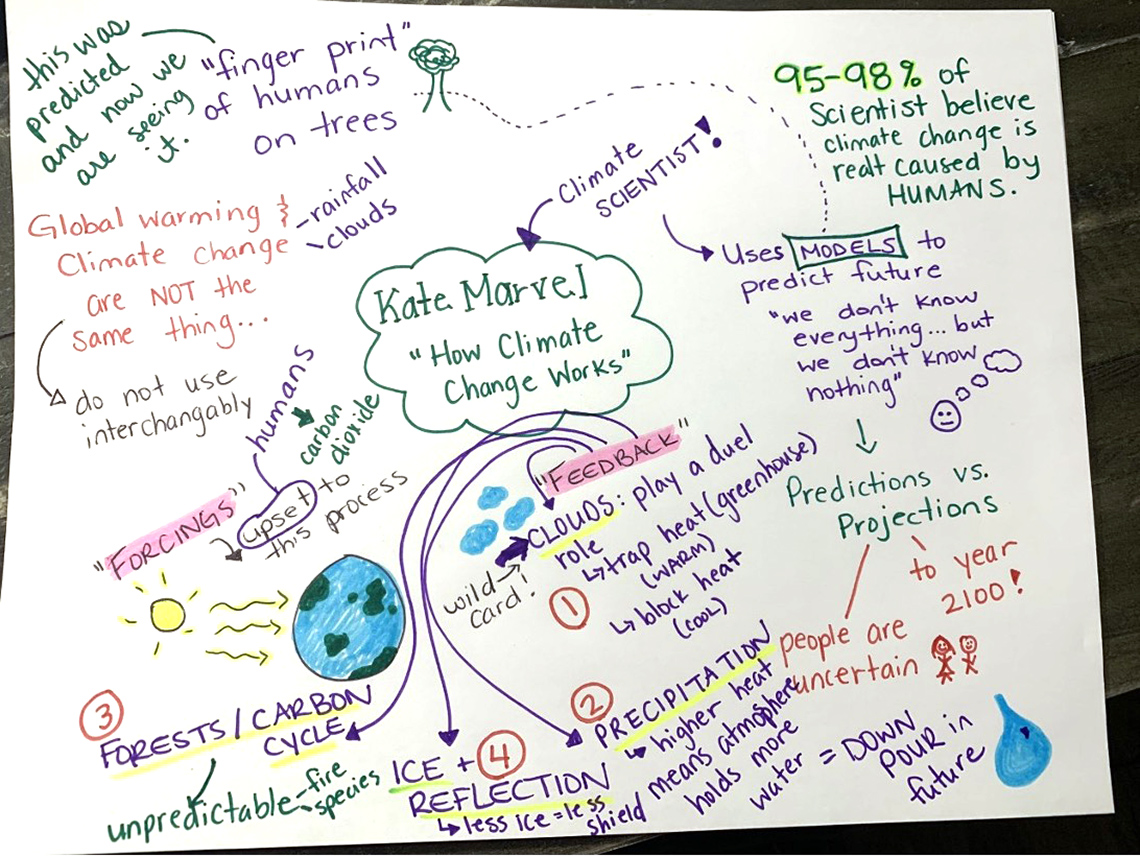
95 to 98% of scientists believe climate change is real and caused by humans. Kate Marvel is a climate scientist that uses models to predict the future. She says, we don’t know everything … but we don’t know nothing. There is a “positive feedback loop” that includes: Clouds – play a duel role in trapping heat (warming) (greenhouse) and blocking heat (cooling) Precipitation – the higher the heat is the more water the atmosphere holds which can cause a down pour of rainfall in the future Forests and the carbon cycle – is unpredictable due to fire and invasive species Ice and reflection – less ice = less shield Forcings are the human created carbon dioxide that upsets the natural processes. Global warming and climate change are not the same things, and the terms should not be used interchangeably. Predictions vs. projections – people are uncertain so it’s hard to make predictions, but projections are made into the year 2100. We can already see the ‘fingerprint’ of humans on trees which was previously predicted.
Pause and Reflect
Pause and reflect
Let’s think about the following questions:
- Is there anything that you want to add to your sketch notes?
- What surprised you or stood out to you the most as you were learning about climate change?
- What are you still wondering about climate change?
Record your ideas and thoughts in a notebook or another method of your choice.
Land-based learning
Access and explore the article “How Indigenous Land Based Learning Can Help Fight Climate Change” to learn more about indigenous land-based learning.
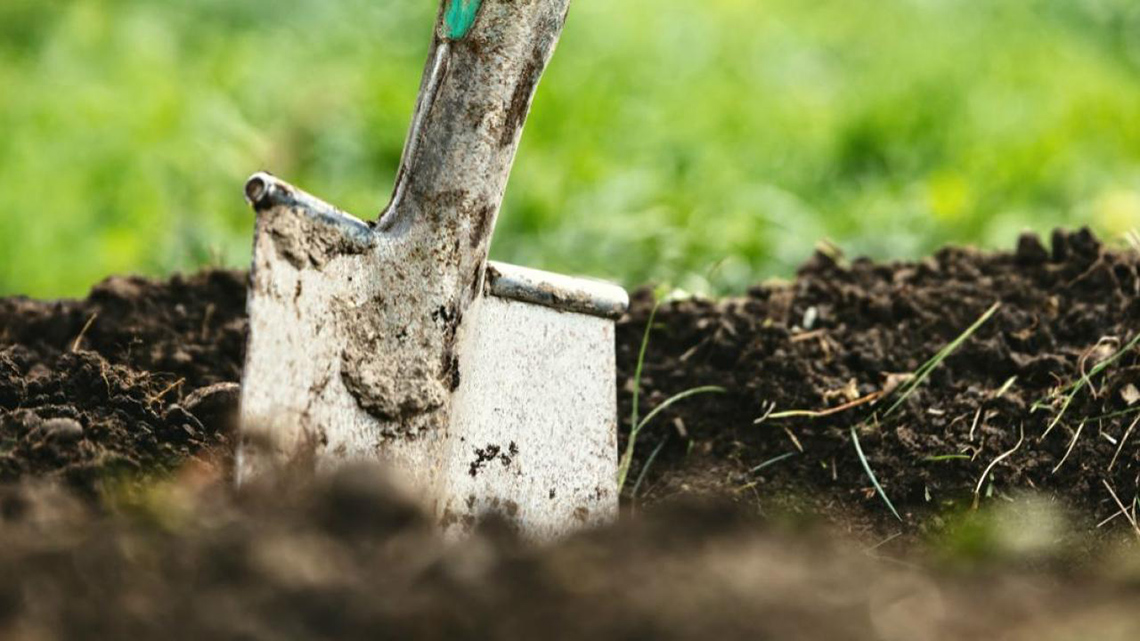
Press tvo today to access How Indigenous Land Based Learning Can Help Fight Climate Change.
TVO dot org (Opens in a new tab)What do you think?
Let’s respond to the following questions:
- What does the quote “we are only as healthy as our environments” mean to you?
- What is one example of a project that is currently happening based on Indigenous land-based learning?
- How can land-based learning help lessen the negative impact of humans on climate change?
Record your ideas in a notebook or another method of your choice.
Battling climate change
What are ways that we can battle against climate change?
Reading Time
Let’s read!
Explore the following excerpt from the article, How Ontario Cities Battle Climate Change by Daniel Kitts.
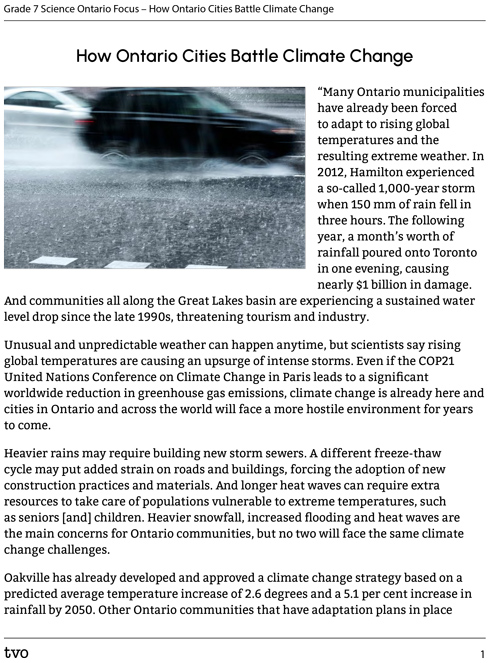
Press the Activity button to access How Ontario Cities Battle Climate Change.
Activity (Open PDF in a new tab)What do you think?
Let’s think about the following questions:
- How have, and currently, how are Ontario cities being affected by climate change?
- What are some of the measures that cities and Ontario communities are taking to prepare for the outcomes of climate change?
Record your ideas in a notebook or another method of your choice.
Consolidation
Review your learning
For each sentence, select the missing word from the drop-down menu.
How does climate change affect us?
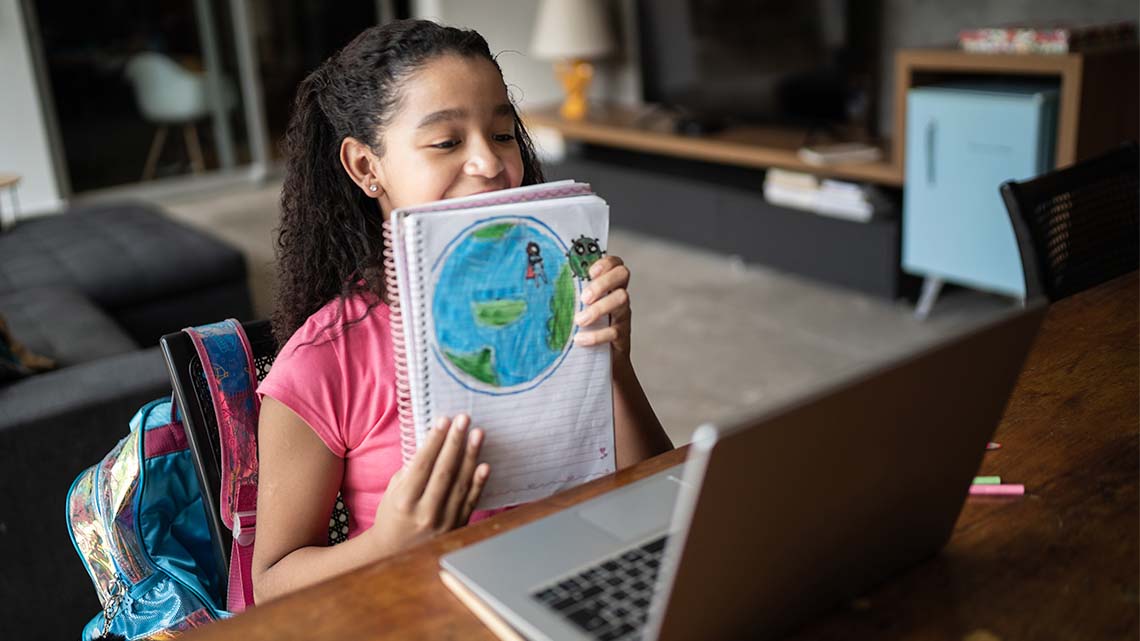
Create a visual, written, or audio piece that demonstrates how climate change is affecting our world and/or Ontario.
Be sure to include the following:
- How are different communities in Ontario working to reduce the negative impact of humans on climate change?
- How can Indigenous land-based learning lessen the negative impact of human activity on climate change?
You could create one of the following projects as your piece, or using another creative method of your choice.
Press the following tabs to access a few creative ideas and examples.
A flipbook is a series of images that very gradually changes from one page to the next, so that when the pages are viewed in quick succession, the images appear to be animated or moving.
Explore the following video clip to learn more about a flipbook.
Stop motion is a short-animated film in which objects are physically manipulated in small increments between individually photographed frames, so that they will appear to be in motion when played all together.
Check out the following video clip to learn more about a stop motion video.
Any piece of artwork (collage, sculpture, poster, painting, etc.) and a small written piece or audio recording explaining it.
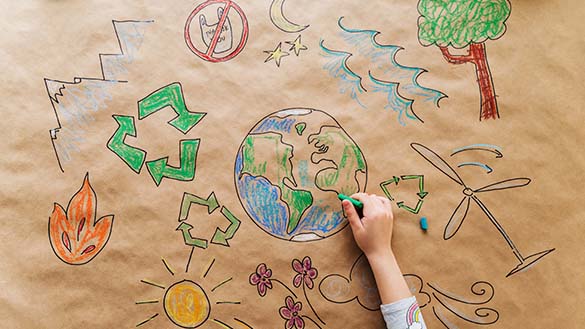
A photo essay is a form of storytelling through photographs or images, usually designed to evoke emotion and understanding with little or no words.

You may use the following checklist to guide your creative piece, and to ensure all elements are included:
My creative piece has…
Reflection
As you read the following descriptions, select the one that best describes your current understanding of the learning in this activity. Press the corresponding button once you have made your choice.
I feel…
Now, expand on your ideas by recording your thoughts using a voice recorder, speech-to-text, or writing tool.
